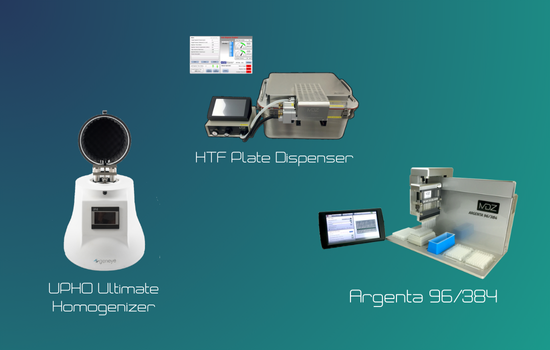The Evolution of Laboratory Equipment: From Manual to Automated Systems

The Evolution of Laboratory Equipment: From Manual to Automated Systems
In the ever-evolving world of scientific research, laboratory equipment has undergone significant advancements over the years. From the days of manual pipetting and simple glassware to the sophisticated automated systems of today, the evolution of lab equipment has transformed the way researchers conduct experiments and analyze data. diaago is at the forefront of these innovations, providing state-of-the-art solutions that meet the dynamic needs of modern laboratories.
The Early Days: Manual Techniques and Basic Tools
In the early 20th century, laboratories relied heavily on manual techniques and basic tools. Researchers used simple glass pipettes, Bunsen burners, and basic microscopes to conduct experiments. While these tools laid the foundation for scientific discovery, they were time-consuming and prone to human error. The need for precision and efficiency spurred the development of more advanced equipment.
The Rise of Automation: Enhancing Precision and Efficiency
Scientific research in the early 20th century relied heavily on manual techniques and basic tools such as glass pipettes, Bunsen burners, and rudimentary microscopes. These methods, though fundamental, were time-consuming and prone to human error, limiting the speed and accuracy of experiments.
In the 1950s, the landscape of laboratory work began to change with the introduction of early automation. Innovators like Andrew P. Lloyd developed the first automated liquid-handling machine, marking a significant leap forward in experimental precision and efficiency. This early automation paved the way for subsequent innovations such as automated pipetting systems, centrifuges, and spectrophotometers. These technologies revolutionized scientific research by improving result accuracy, reducing human error, and enabling the processing of larger sample volumes in less time.
During this period, the demand for more sophisticated analytical tools grew. In response, automated spectrophotometers emerged, enabling scientists to measure light absorption across different wavelengths with unprecedented accuracy. This advancement was crucial for fields such as biochemistry and molecular biology, where precise quantification of substances like proteins and nucleic acids was essential.
The 1950s also saw the development of automated centrifuges, which played a vital role in separating and analyzing biological materials based on their density. This automation not only accelerated sample processing times but also improved the reproducibility of experimental result.
More recently, and in contrast, laboratory automation has reached new heights with innovations like the SmartReader™ Multimode microplate reader. This state-of-the-art instrument integrates absorbance, fluorescence, and luminescence measurement capabilities into a single platform. Designed for modern life science laboratories, the SmartReader Multimode features an intuitive 10-inch color touchscreen, standalone operation capability, and optional PC software for comprehensive data handling. Its versatility across applications such as ELISA, enzyme kinetics, and DNA/RNA analysis underscores its pivotal role in streamlining workflows and enhancing research efficiency.
Our range of Tube Rotators, including the Analog Tube Rotator, Industrial Tube Rotator, and Fixed Angle Analog Tube Rotator, offer versatile solutions for efficient sample mixing and handling. These devices are designed to accommodate various sample types and volumes, ensuring thorough mixing and consistency across all experiments.

The Modern Era: Integration of Digital Technologies
In recent years, the integration of digital technologies has further propelled the capabilities of laboratory equipment. Digital interfaces, data logging, and remote monitoring have become standard features in modern lab instruments. These advancements enable researchers to track experiments in real-time, store vast amounts of data, and analyze results with greater accuracy.
The UPHO Ultimate Homogenizer exemplifies the fusion of automation and digital technology. With its user-friendly interface and programmable settings, it offers unparalleled consistency in sample preparation. Researchers can achieve precise homogenization with minimal effort, ensuring that every sample is processed uniformly.
The HTF Plate Dispenser and Argenta 96/384 further enhance laboratory efficiency by automating the process of sample dispensing and handling. These tools are essential for high-throughput environments where accuracy and speed are paramount.

Future Trends: The Road Ahead
As we look to the future, the trends in laboratory equipment point towards even greater automation, miniaturization, and integration with artificial intelligence. Innovations such as the AutoMATE™ 96 Microplate Pipetting Workstation exemplify our commitment to advancing lab automation. This cutting-edge workstation streamlines the pipetting process, reducing the risk of contamination and ensuring precise liquid handling. By automating repetitive tasks, researchers can devote more time to complex experimental aspects, leading to faster and more reliable outcomes.
Our dedication to enhancing laboratory automation is further exemplified by products like the HT700 Tube Handler. This versatile instrument automates the handling of tubes, improving efficiency and reliability in sample management. Whether integrating with existing systems or used as a standalone solution, the HT700 enhances laboratory productivity by minimizing manual intervention and optimizing workflow continuity.
Looking ahead, diaago remains at the forefront of innovation, continuously developing solutions that meet the evolving needs of modern laboratories. From advanced automation to integration with digital technologies, we are committed to supporting researchers in their quest for scientific excellence.

Ending Notes
The evolution of laboratory equipment from manual techniques to automated systems has revolutionized the field of scientific research. We are proud to contribute to this journey by offering state-of-the-art equipment that enhances precision, efficiency, and reliability. As we continue to innovate and adapt to the changing needs of modern laboratories, we look forward to supporting researchers in their quest for discovery and excellence.
Stay tuned for more updates on our latest products and innovations, and don't hesitate to contact us for more information on how diaago can help you achieve your research goals.
